Experimental Investigation of Additive Manufacturing of Continuous Carbon Fiber Composites with Multifunctional Electro-Tensile Properties
Abstract
:1. Introduction
2. Materials and Methods
2.1. Materials and Additive Manufacturing of Specimen
2.2. Multifunctional Flexural-Electrical Characterization at Room Temperature Dry
3. Results and Discussion
4. Conclusions
Author Contributions
Funding
Institutional Review Board Statement
Informed Consent Statement
Data Availability Statement
Acknowledgments
Conflicts of Interest
References
- Zhang, Y.; Moon, S. The Effect of Annealing on Additive Manufactured ULTEM™ 9085 Mechanical Properties. Materials 2021, 14, 2907. [Google Scholar] [CrossRef] [PubMed]
- Blok, L.G.; Longana, M.L.; Yu, H.; Woods, B.K.S. An investigation into 3D printing of fibre reinforced thermoplastic composites. Addit. Manuf. 2018, 22, 176–186. [Google Scholar] [CrossRef]
- Melenka, G.W.; Cheung, B.K.O.; Schofield, J.S.; Dawson, M.R.; Carey, J.P. Evaluation and prediction of the tensile properties of continuous fiber-reinforced 3D printed structures. Compos. Struct. 2016, 153, 866–875. [Google Scholar] [CrossRef]
- Ning, F.; Cong, W.; Qiu, J.; Wei, J.; Wang, S. Additive manufacturing of carbon fiber reinforced thermoplastic composites using fused deposition modeling. Comp. Part B Eng. 2015, 80, 369–378. [Google Scholar] [CrossRef]
- D’Aloia, A.G.; Proietti, A.; Bidsorkhi, H.C.; Tamburrano, A.; De Bellis, G.; Marra, F.; Bregnocchi, A.; Sarto, M.S. Electrical, Mechanical and electromechanical properties of graphene-thermoset polymer composites produced using acetone-dmf solvents. Polymers 2018, 10, 82. [Google Scholar] [CrossRef] [PubMed] [Green Version]
- Wysmulski, P.; Debski, H.; Falkowicz, K.; Rozylo, P. The influence of load eccentricity on the behavior of thin-walled compressed composite structures. Compos. Struct. 2019, 213, 98–107. [Google Scholar] [CrossRef]
- Moyer, K.; Meng, C.; Marshall, B.; Assal, O.; Eaves, J.; Perez, D.; Karkkainen, R.; Roberson, L.; Pint, C.L. Carbon fiber reinforced structural lithium-ion battery composite: Multifunctional power integration for CubeSats. Energy Storage Mater. 2020, 24, 676–681. [Google Scholar] [CrossRef]
- Yu, T.; Zhang, Z.; Song, S.; Bai, Y.; Wu, D. Tensile and flexural behaviors of additively manufactured continuous carbon fiber-reinforced polymer composites. Compos. Struct. 2019, 225, 111147. [Google Scholar] [CrossRef]
- Goh, G.D.; Dikshit, V.; Nagalingam, A.P.; Goh, G.L.; Agarwala, S.; Sing, S.L.; Wei, J.; Yeong, W.Y. Characterization of mechanical properties and fracture mode of additively manufactured carbon fiber and glass fiber reinforced thermoplastics. Mater. Des. 2018, 137, 79–89. [Google Scholar] [CrossRef]
- Deka, B.; Hazarika, A.; Kwon, O.; Kim, D.; Park, Y.-B.; Park, H.W. Multifunctional enhancement of woven carbon fiber/ZnO nanotube-based structural supercapacitor and polyester resin-domain solid-polymer electrolytes. Chem. Eng. J. 2017, 325, 672–680. [Google Scholar] [CrossRef]
- Kerekes, T.W.; Lim, H.; Joe, W.Y.; Yun, G.J. Characterization of process–deformation/damage property relationship of fused deposition modeling (FDM) 3D-printed specimens. Addit. Manuf. 2019, 25, 532–544. [Google Scholar] [CrossRef]
- Naranjo-Lozada, J.; Ahuett-Garza, H.; Castañón, P.O.; Verbeeten, W.M.; Sáiz-González, D. Tensile properties and failure behavior of chopped and continuous carbon fiber composites produced by additive manufacturing. Addit. Manuf. 2019, 26, 227–241. [Google Scholar] [CrossRef]
- Hatter, C.B.; Sarycheva, A.; Levitt, A.; Anasori, B.; Nataraj, L.; Gogotsi, Y. Electrically Conductive MXene-Coated Glass Fibers for Damage Monitoring in Fiber-Reinforced Composites. C 2020, 6, 64. [Google Scholar] [CrossRef]
- Wang, X.; Fu, X.; Chung, D.D.L. Electromechanical study of carbon fiber composites. J. Mater. Res. 1998, 13, 3081–3092. [Google Scholar] [CrossRef]
- Alarifi, I.; Alharbi, A.; Khan, W.S.; Swindle, A.L.; Asmatulu, R. Thermal, Electrical and Surface Hydrophobic Properties of Electrospun Polyacrylonitrile Nanofibers for Structural Health Monitoring. Materials 2015, 8, 7017–7031. [Google Scholar] [CrossRef] [PubMed] [Green Version]
- Markforged. Markforged Materials. Available online: https://markforged.com/about/company (accessed on 8 May 2021).
- Markforged. Markforged: Composites Material Datasheet. Available online: http://static.markforged.com/downloads/composites-data-sheet.pdf (accessed on 8 July 2021).
- Markforged. Markforged: All Your Questions about 3D Printing Answered. Available online: https://markforged.com/resources/blog/3d-printing (accessed on 8 July 2021).
- Lovingfoss, R.; Clarkson, E. Stratasys Certified ULTEM 9085 Fortus 900mc Additively Manufactured Polymer Material Qualification Statistical Analysis Report; National Institute for Aviation Research (NIAR): Wichita, KS, USA, 2019. [Google Scholar]
- MTS Company. MTS Company: Materials Test Systems. Available online: https://www.mts.com/en/products/materials (accessed on 8 August 2021).
- ASTM. ASTM D3039/D3039M—17, Standard Test Method for Tensile Properties of Polymer Matrix Composite Materials; ASTM International: West Conshohocken, PA, USA, 2017. [Google Scholar]
- Keysight Technologies. Keysight Technologies: Keysight B2987A Electrometer. Available online: https://www.keysight.com/us/en/support/B2987A/electrometer-high-resistance-meter-0-0-1fa-battery.html (accessed on 8 August 2021).
- NIAR. National Institute for Aviation Research (NIAR). Available online: https://www.wichita.edu/research/NIAR/ (accessed on 8 August 2021).
- NIAR. AGATE: B—Basis Design Allowables for Epoxy—Based Prepreg; Fiberite 8-Harness Graphite Fabric T650 3K-135-8H/7740; AGATE-WP3.3-033051-102; NIAR: Wichita, KS, USA, 2001. [Google Scholar]
- NASA. Advanced General Aviation Transport Experiments (AGATE). Washington, DC 20546, USA. Available online: https://www.nasa.gov/centers/langley/news/factsheets/AGATE.html (accessed on 8 August 2021).
- De Paiva, J.M.F.; Mayer, S.; Rezende, M.C. Comparison of tensile strength of different carbon fabric reinforced epoxy composites. Mater. Res. 2006, 9, 83–90. [Google Scholar] [CrossRef]
- Van Der Klift, F.; Koga, Y.; Todoroki, A.; Ueda, M.; Hirano, Y.; Matsuzaki, R. 3D Printing of Continuous Carbon Fibre Reinforced Thermo-Plastic (CFRTP) Tensile Test Specimens. Open J. Compos. Mater. 2016, 06, 18–27. [Google Scholar] [CrossRef] [Green Version]
- National Institute for Aviation Research (NIAR). Stratasys Certified ULTEMTM 9085 Fortus 900mc Additively Manufactured Polymer Material Qualification Data Report; National Institute for Aviation Research (NIAR): Wichita, KS, USA, 2020. [Google Scholar]
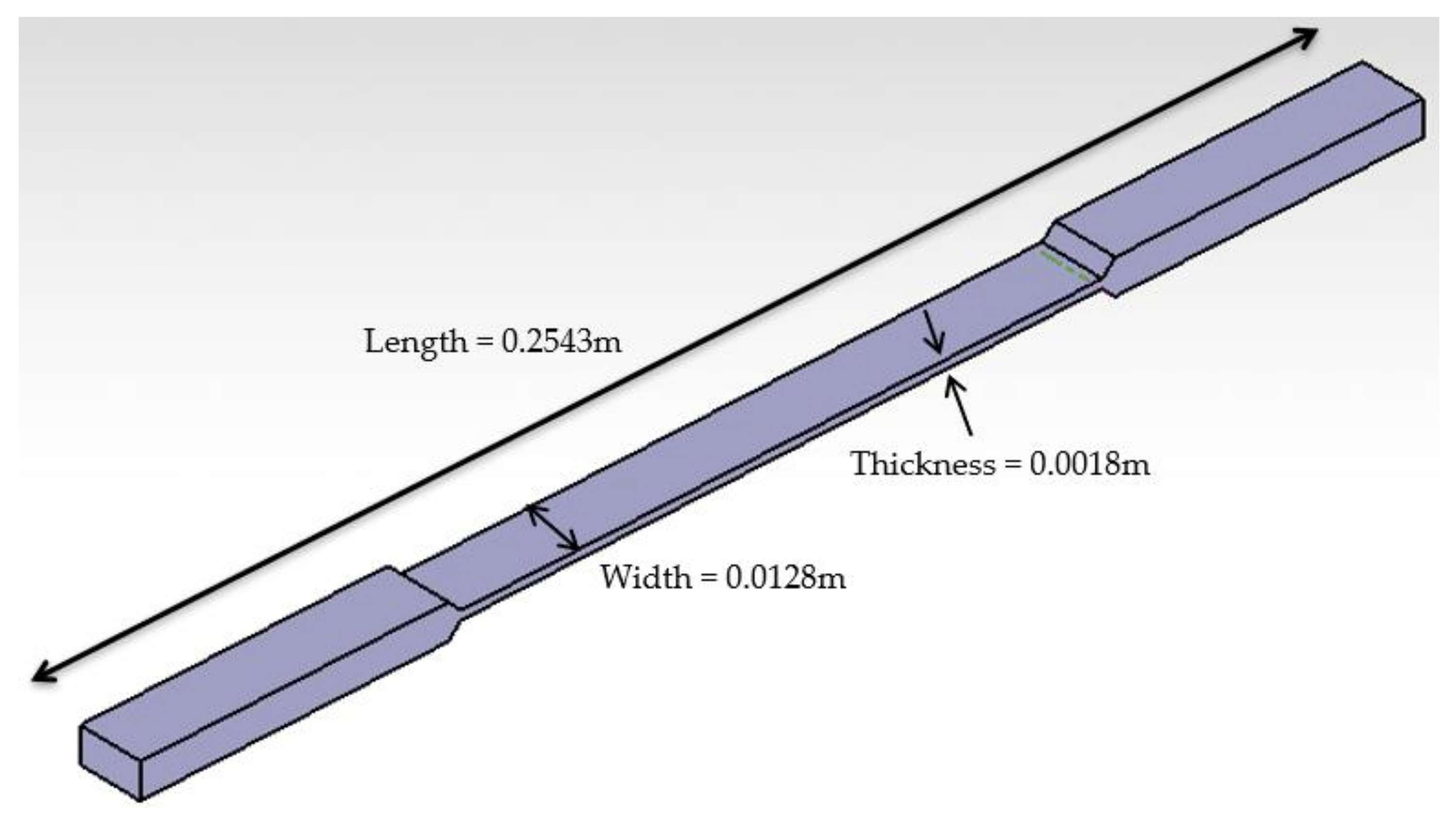

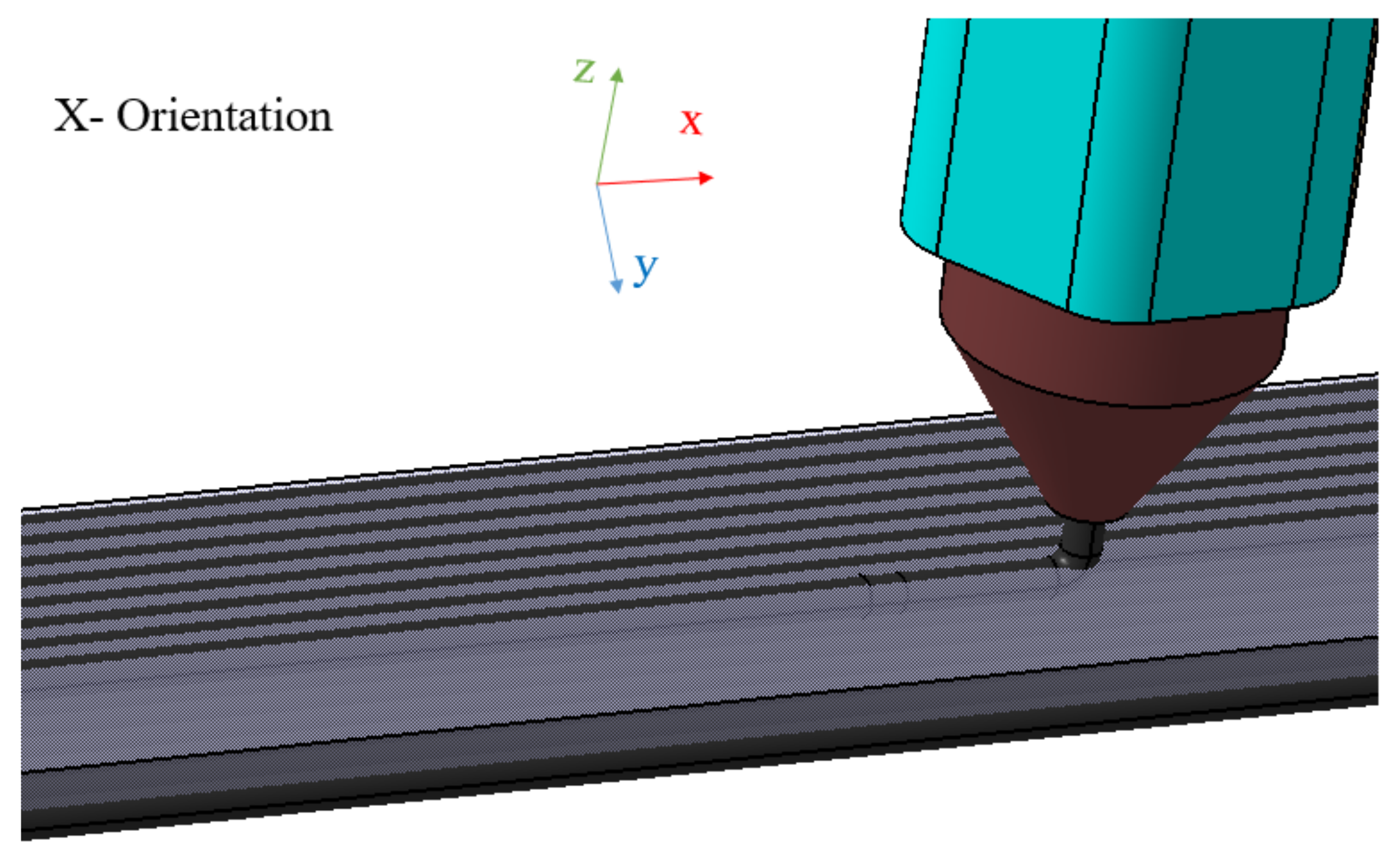

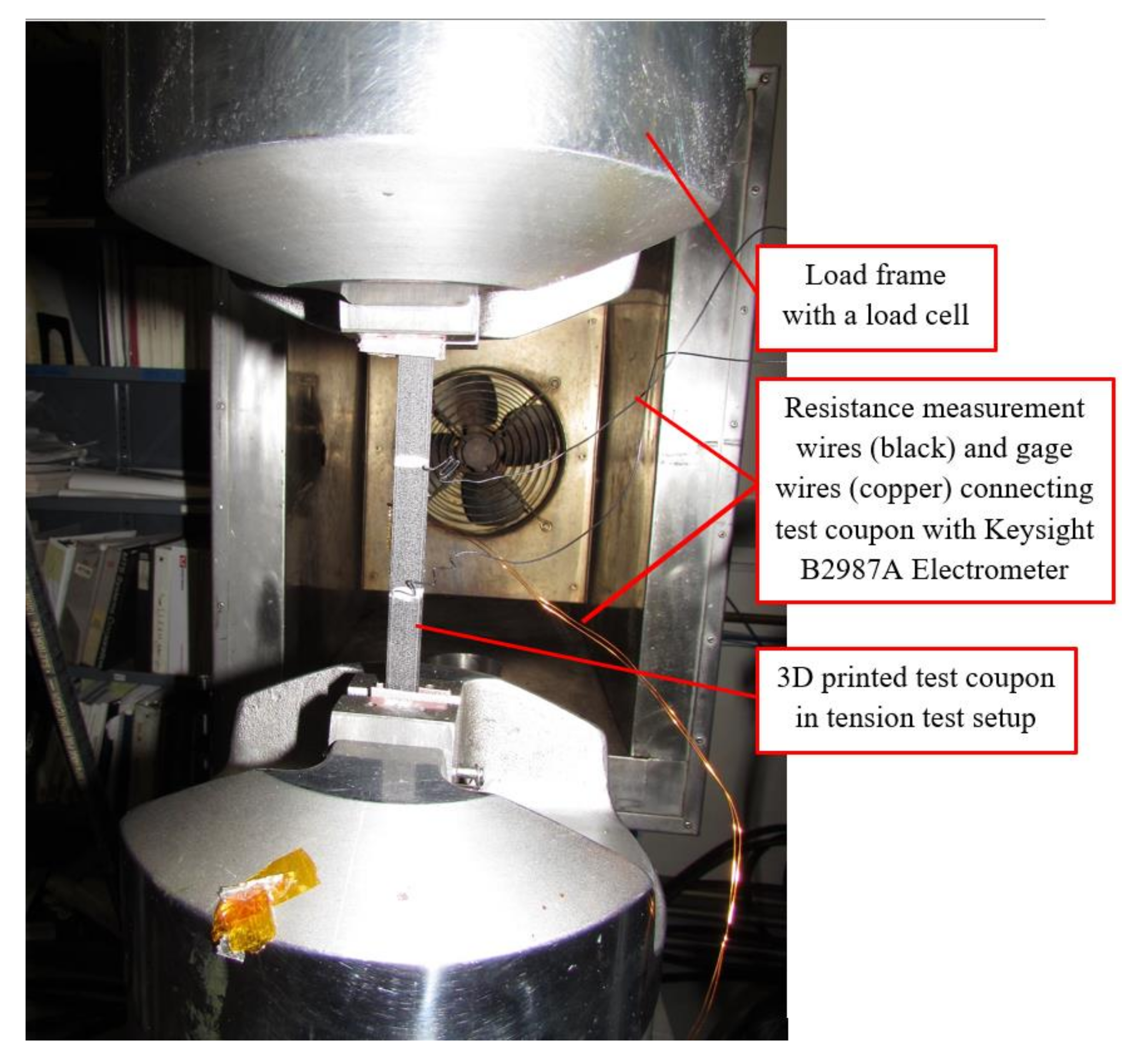
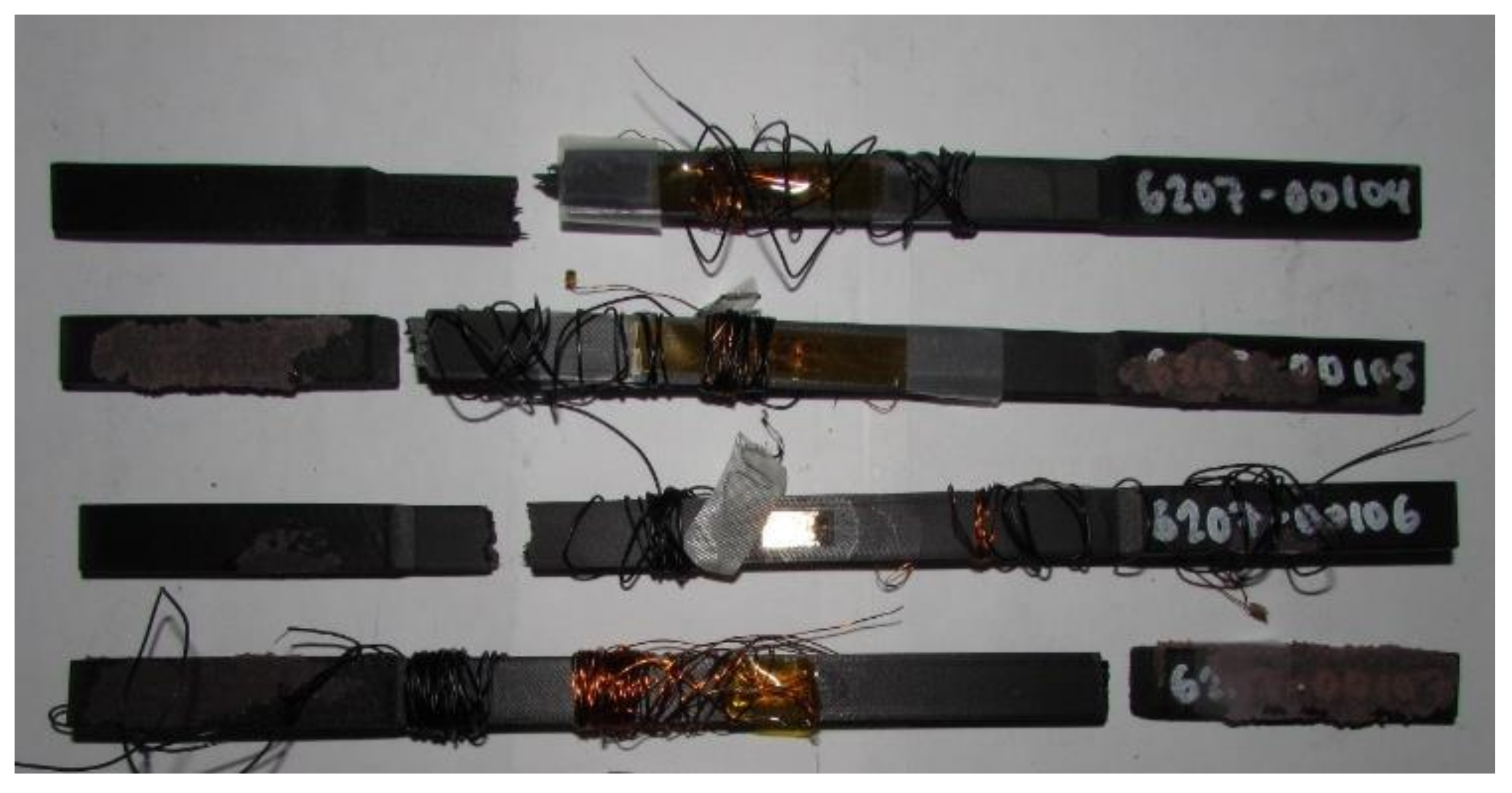
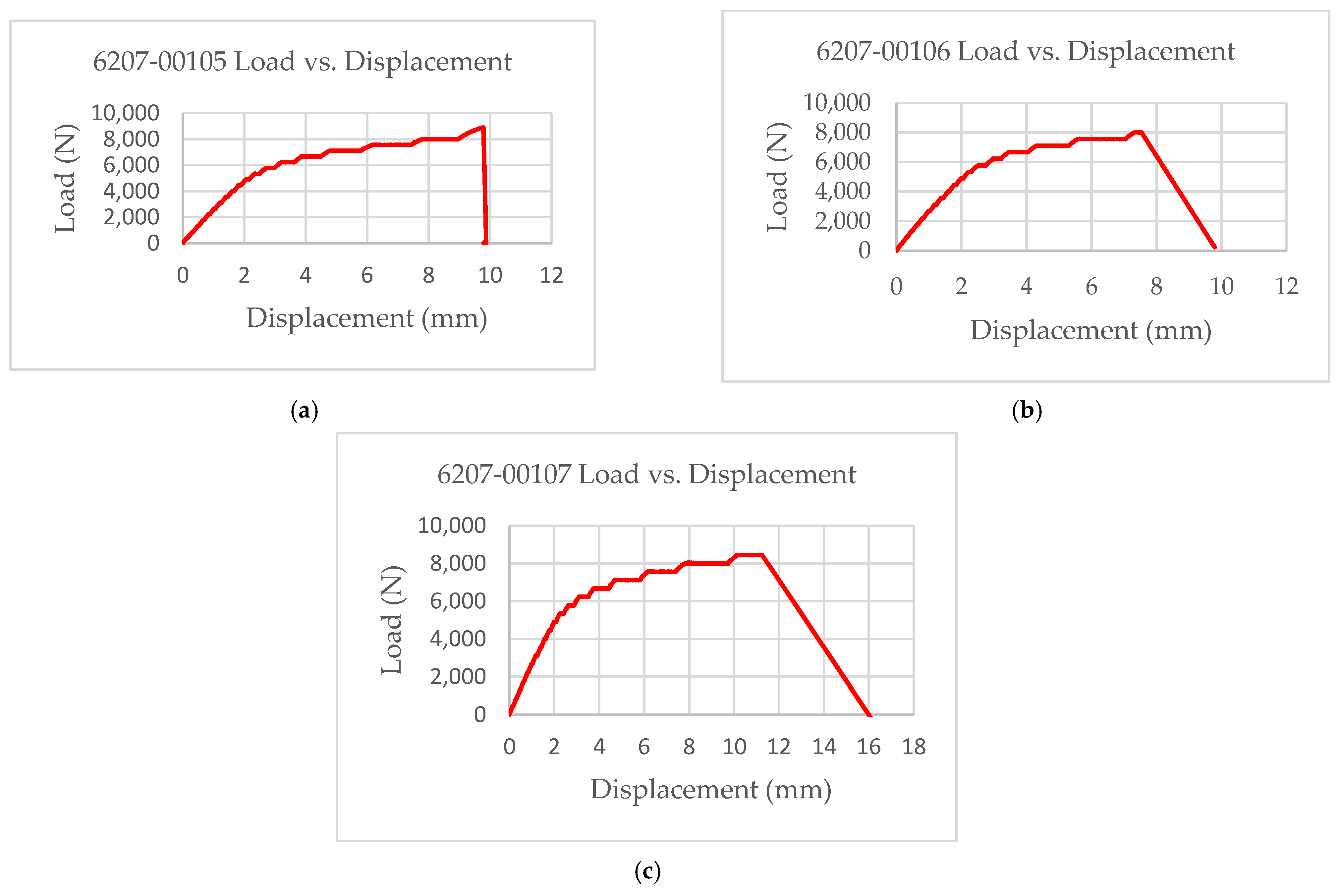
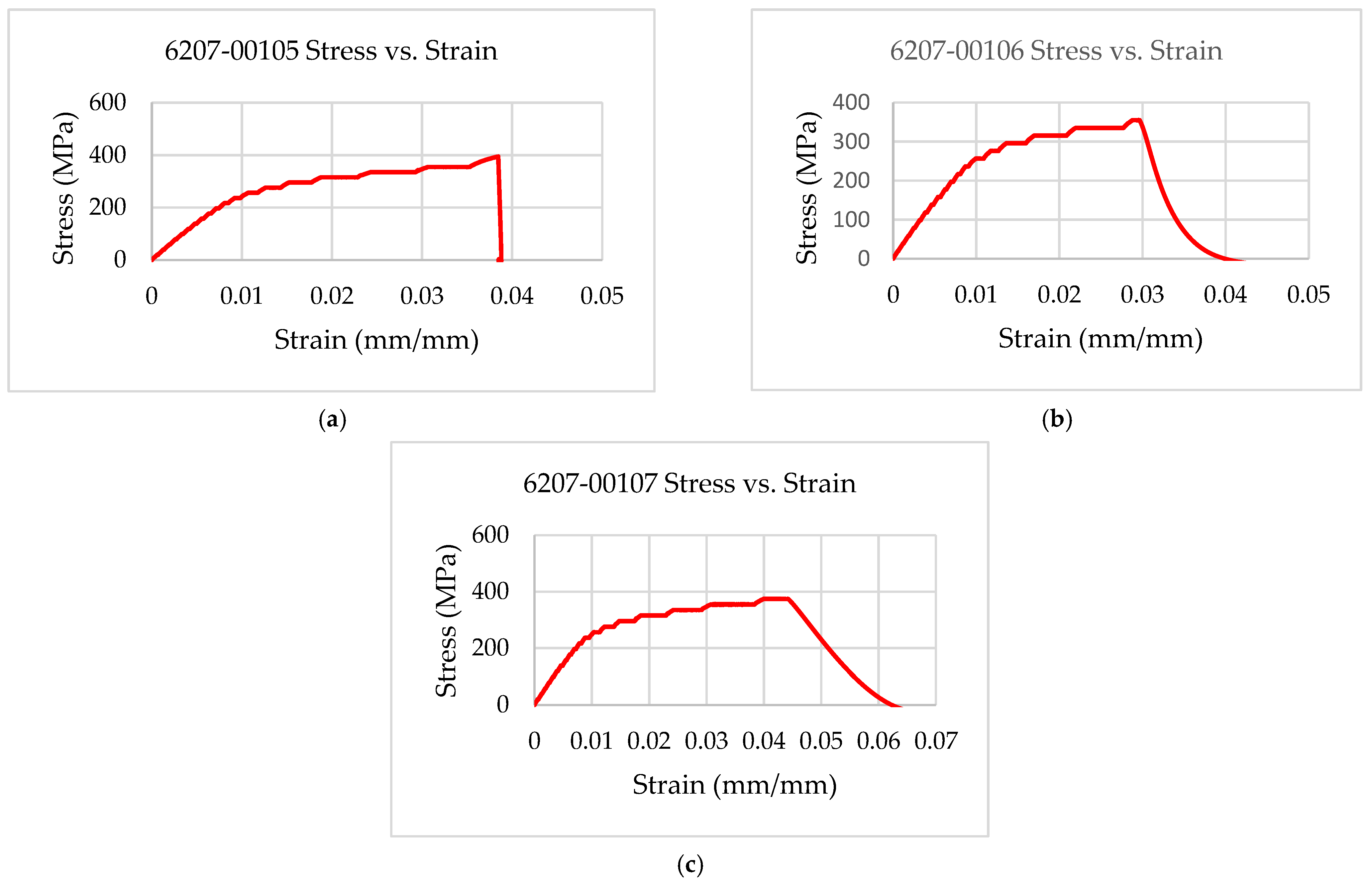

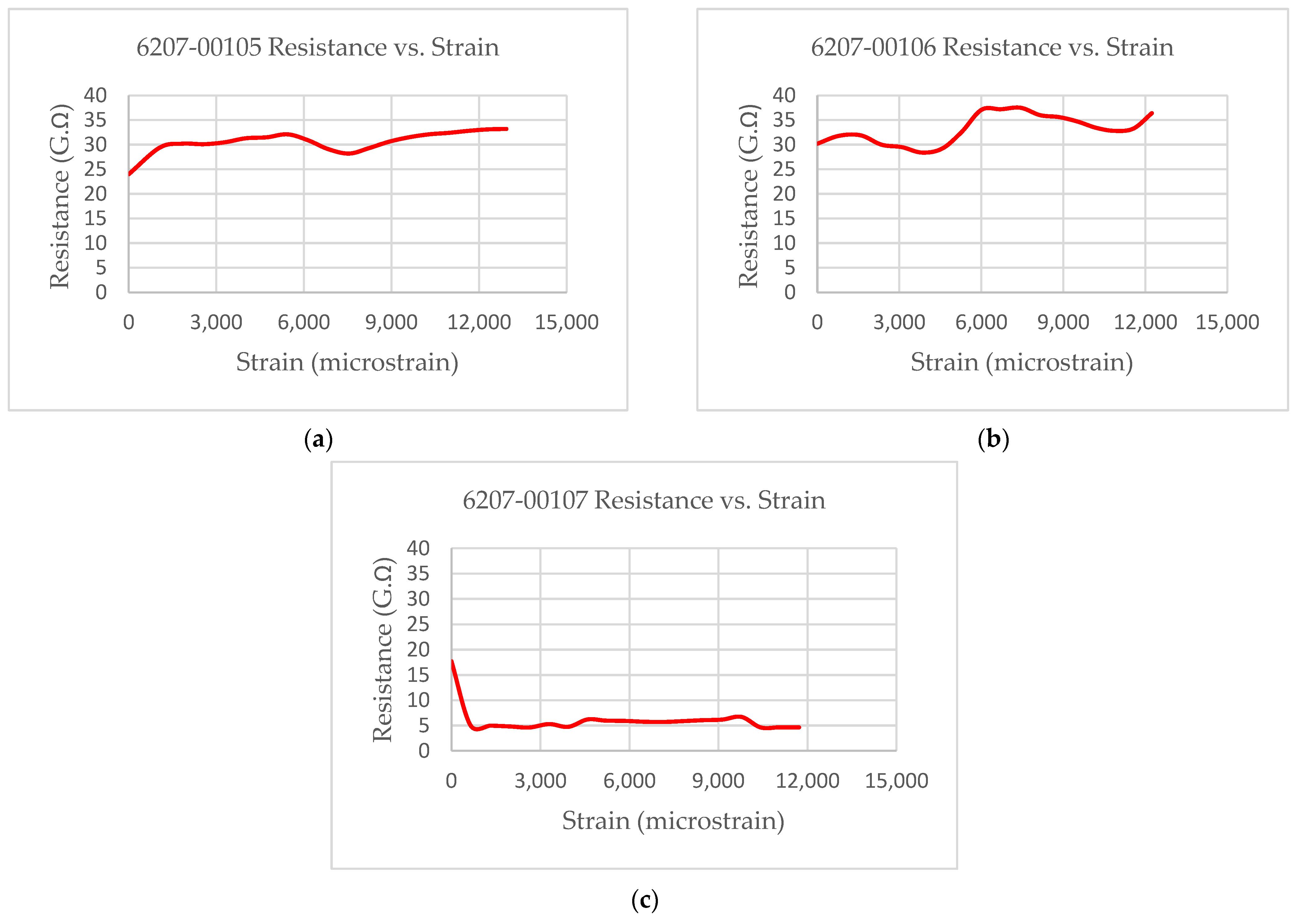
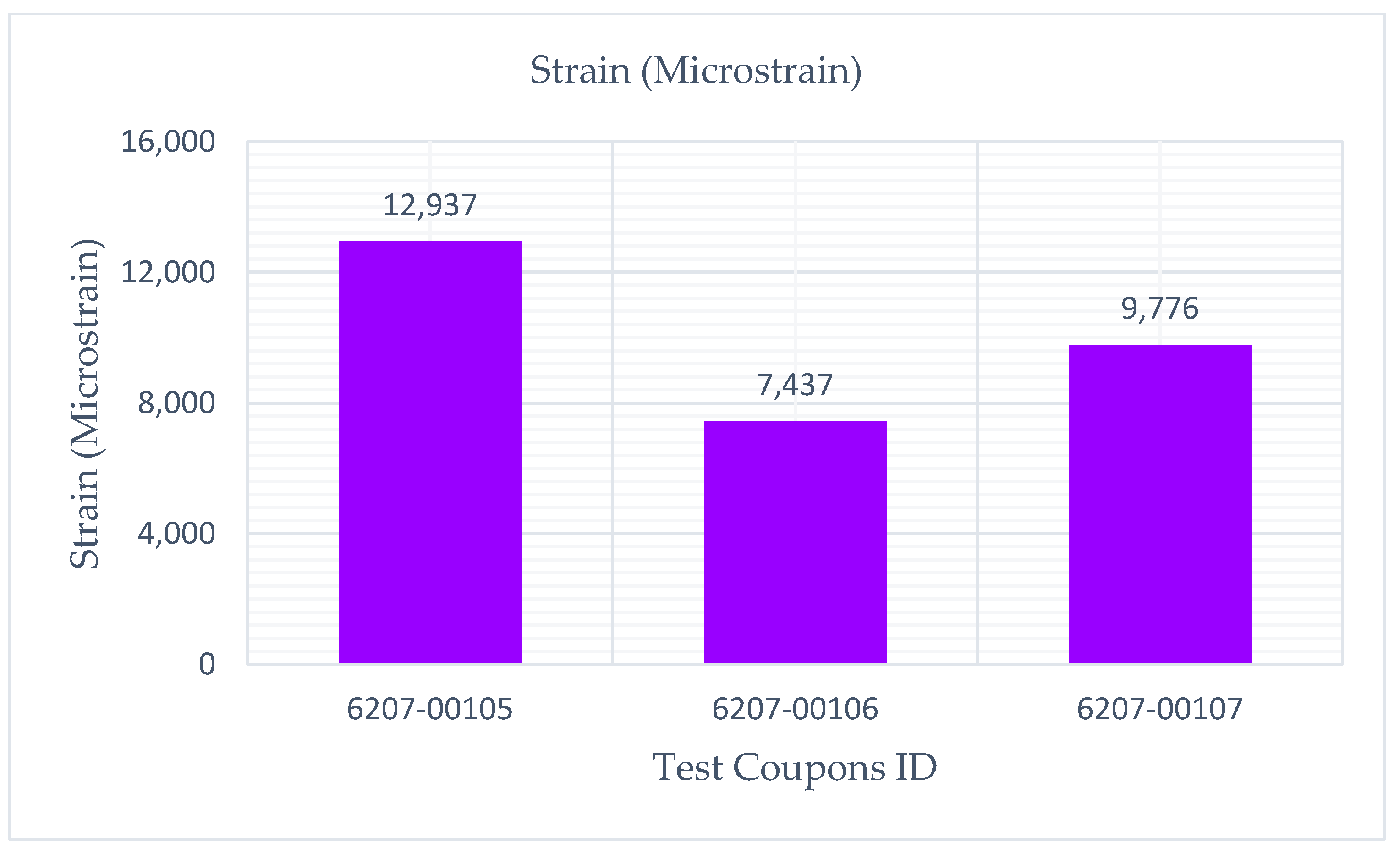
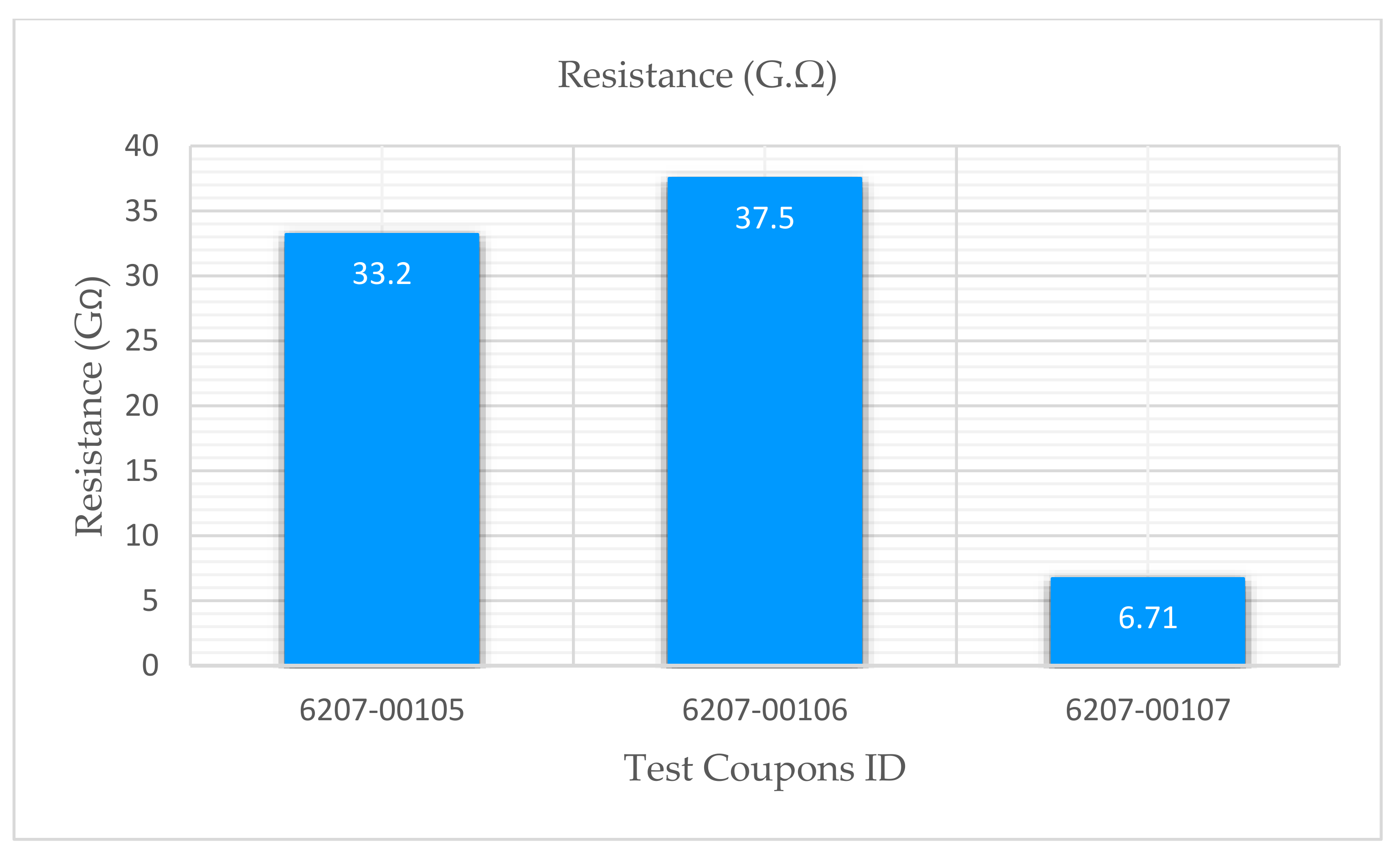
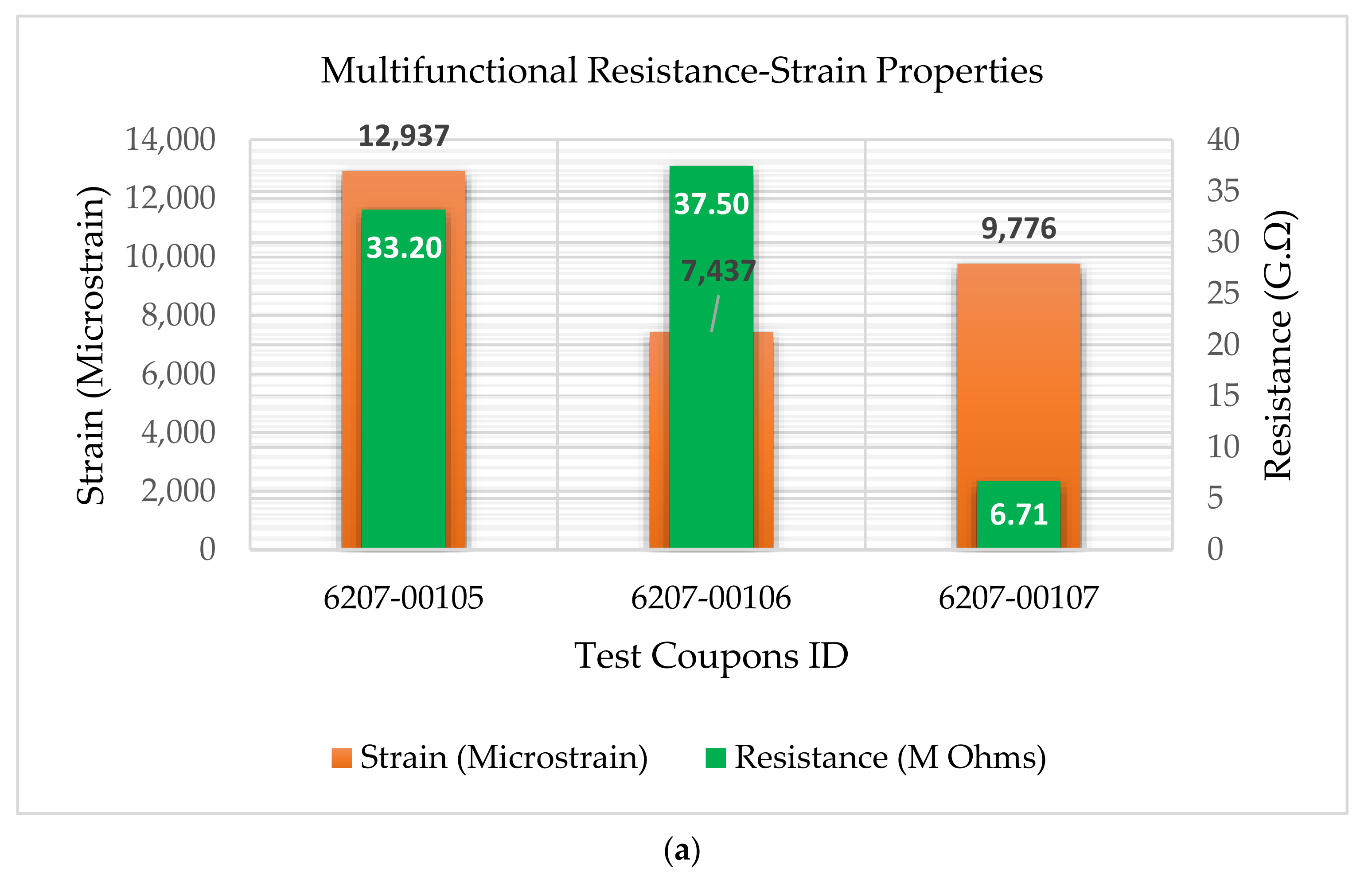
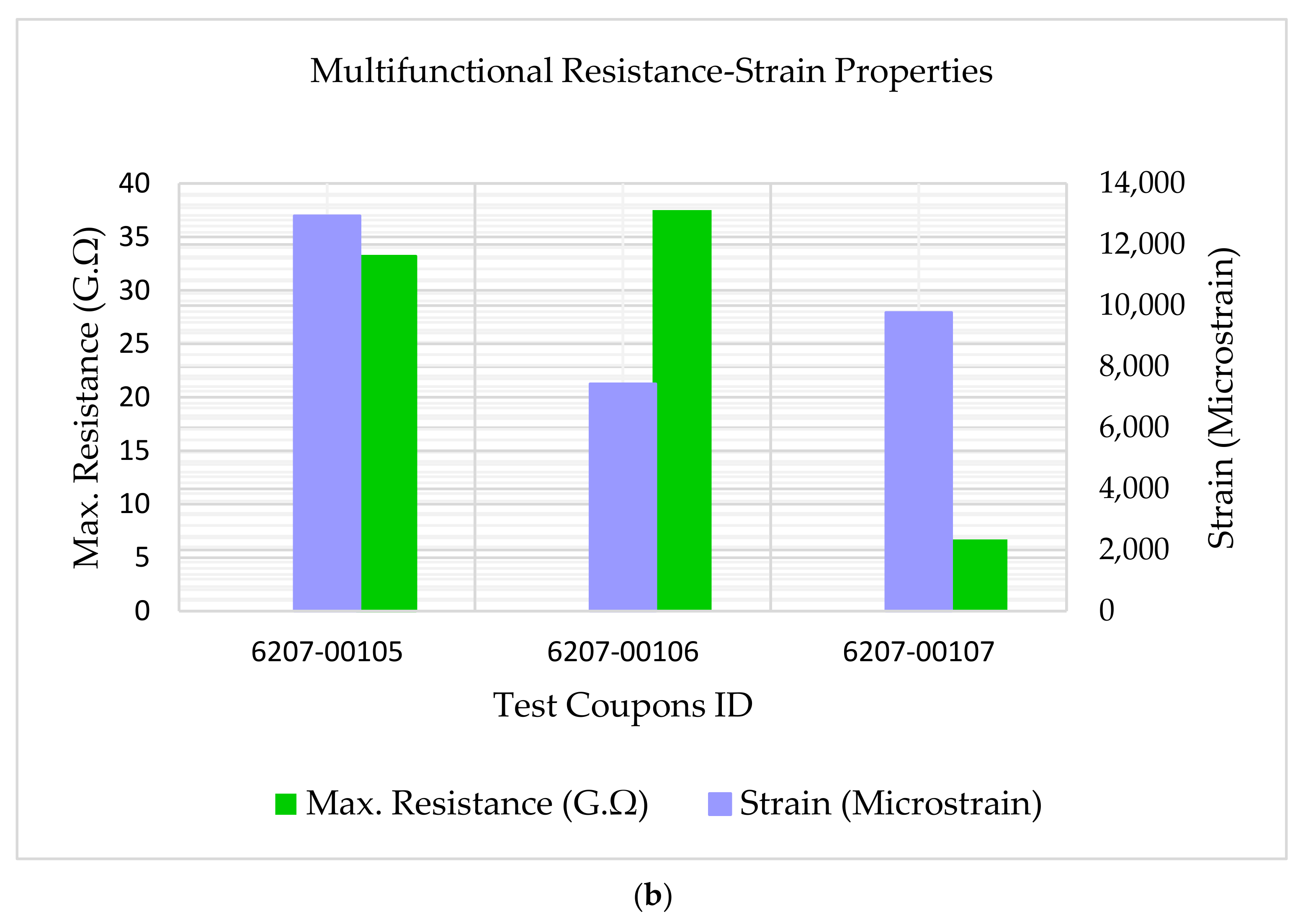
| Items | Information |
|---|---|
| Make of AM machine | Markforged company (Watertown, MA, USA) |
| Model of AM machine | Markforged X7 (Markforged company, Watertown, MA, USA) |
| Series of AM machine | Industrial Composite 3D Printers |
| AM process/type | Special type of the FFF called as Markforged CFF |
| Material specifications | Markforged manufactured Onyx FR with continuous carbon fiber (solid Onyx as outside walls and inside core was continuous carbon fiber) |
| Finish | Markforged CFF with 50% fiber reinforcement |
| No. of extruders | 2 |
| Raster angle of test coupons | 0 degree |
| Temperature of Onyx Printing Nozzle | 275 °C |
| Temperature of Fiber-Laying Nozzle | 250 °C |
| Diameter of the extruded Onyx material | 0.40 mm Wall Thickness |
| Diameter of the extruded fiber material | 0.9 mm Wall Thickness |
| Surface Finish on 3D printed specimens | 0.125 mm Layer Height |
| Raw materials | Onyx (Markforged Material) + Carbon Fiber |
| Coupon ID | Maximum Load, Pmax (N) | Ultimate Tensile Strength, Ftu (MPa) |
|---|---|---|
| 6207-00105 | 8907 | 392 |
| 6207-00106 | 8017 | 351 |
| 6207-00107 | 8454 | 370 |
| Average | 8459 | 371 |
| Standard Deviation | 445.02 | 20.52 |
| Coefficient of Variation (COV) | 5% | 6% |
| Coupon ID | Maximum Resistance (G. Ω) |
|---|---|
| 6207-00105 | 33.2 |
| 6207-00106 | 37.5 |
| 6207-00107 | 6.7 |
| Average | 25.80 |
| Standard Deviation | 16.67 |
Publisher’s Note: MDPI stays neutral with regard to jurisdictional claims in published maps and institutional affiliations. |
© 2021 by the authors. Licensee MDPI, Basel, Switzerland. This article is an open access article distributed under the terms and conditions of the Creative Commons Attribution (CC BY) license (https://creativecommons.org/licenses/by/4.0/).
Share and Cite
Ghimire, R.; Liou, F. Experimental Investigation of Additive Manufacturing of Continuous Carbon Fiber Composites with Multifunctional Electro-Tensile Properties. Materials 2021, 14, 6574. https://doi.org/10.3390/ma14216574
Ghimire R, Liou F. Experimental Investigation of Additive Manufacturing of Continuous Carbon Fiber Composites with Multifunctional Electro-Tensile Properties. Materials. 2021; 14(21):6574. https://doi.org/10.3390/ma14216574
Chicago/Turabian StyleGhimire, Ritesh, and Frank Liou. 2021. "Experimental Investigation of Additive Manufacturing of Continuous Carbon Fiber Composites with Multifunctional Electro-Tensile Properties" Materials 14, no. 21: 6574. https://doi.org/10.3390/ma14216574
APA StyleGhimire, R., & Liou, F. (2021). Experimental Investigation of Additive Manufacturing of Continuous Carbon Fiber Composites with Multifunctional Electro-Tensile Properties. Materials, 14(21), 6574. https://doi.org/10.3390/ma14216574







